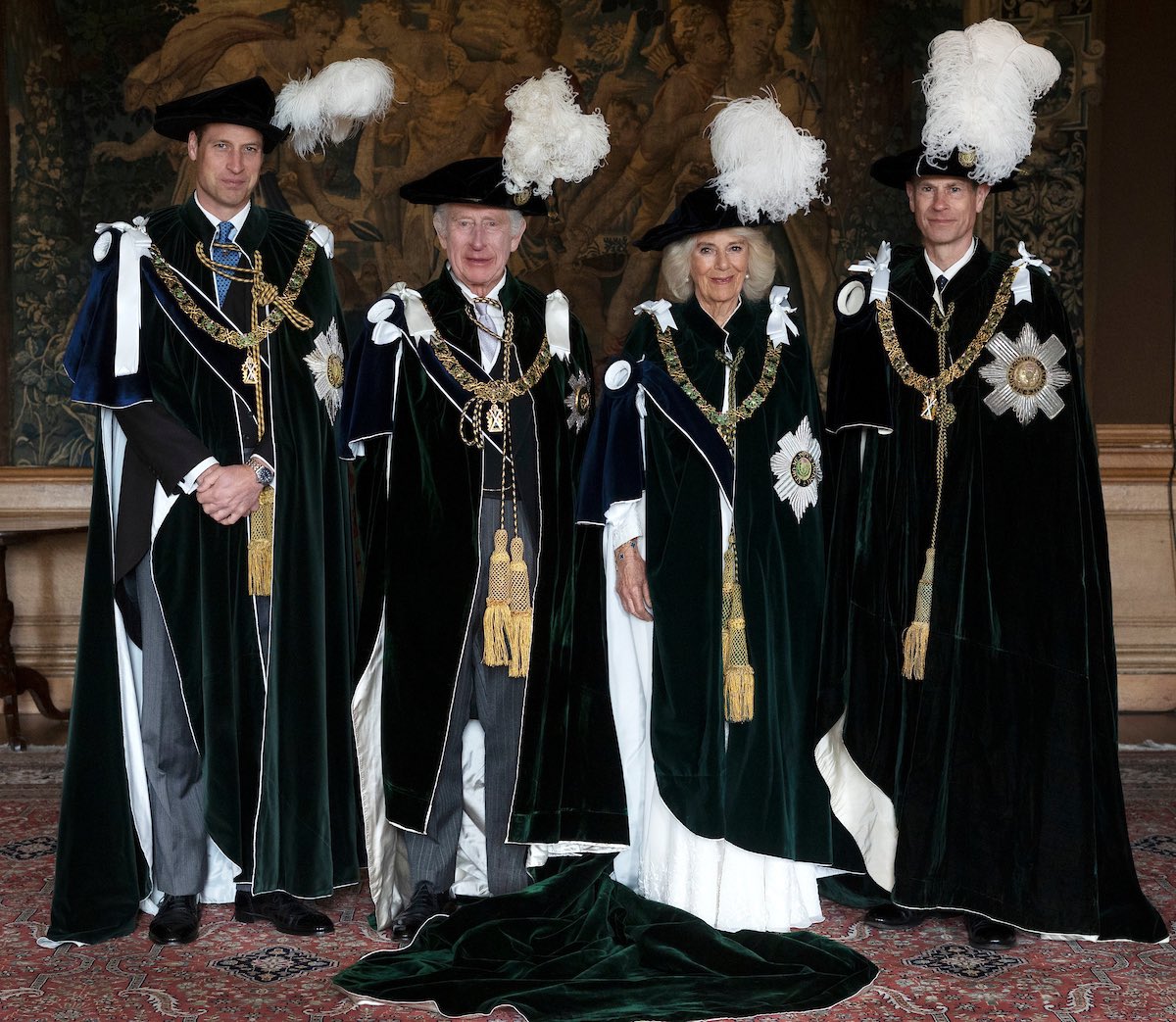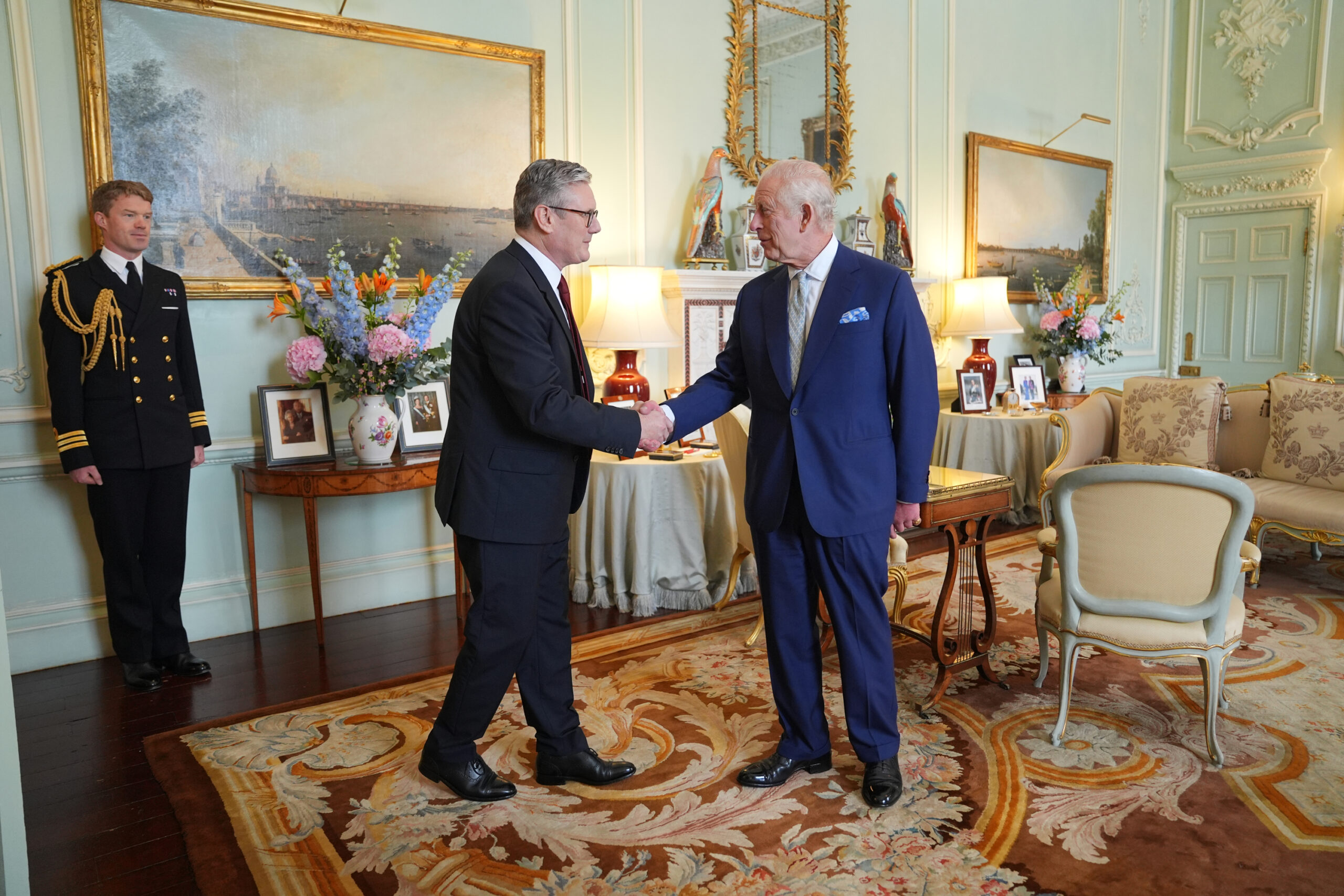One of the seventeenth centuries greatest artists, Artemisia Gentileschi, sold paintings to the good and great of Europe. One of her patrons was in fact Charles I, a prolific art collector and effectively the creator of the Royal Collection.
A painting that had been sat in the Royal Collection – in storage, in fact, at Hampton Court – and mistakenly attributed to the ‘French School’ for over 100 years, has now been identified as a missing piece by one of history’s earliest successful female artists.
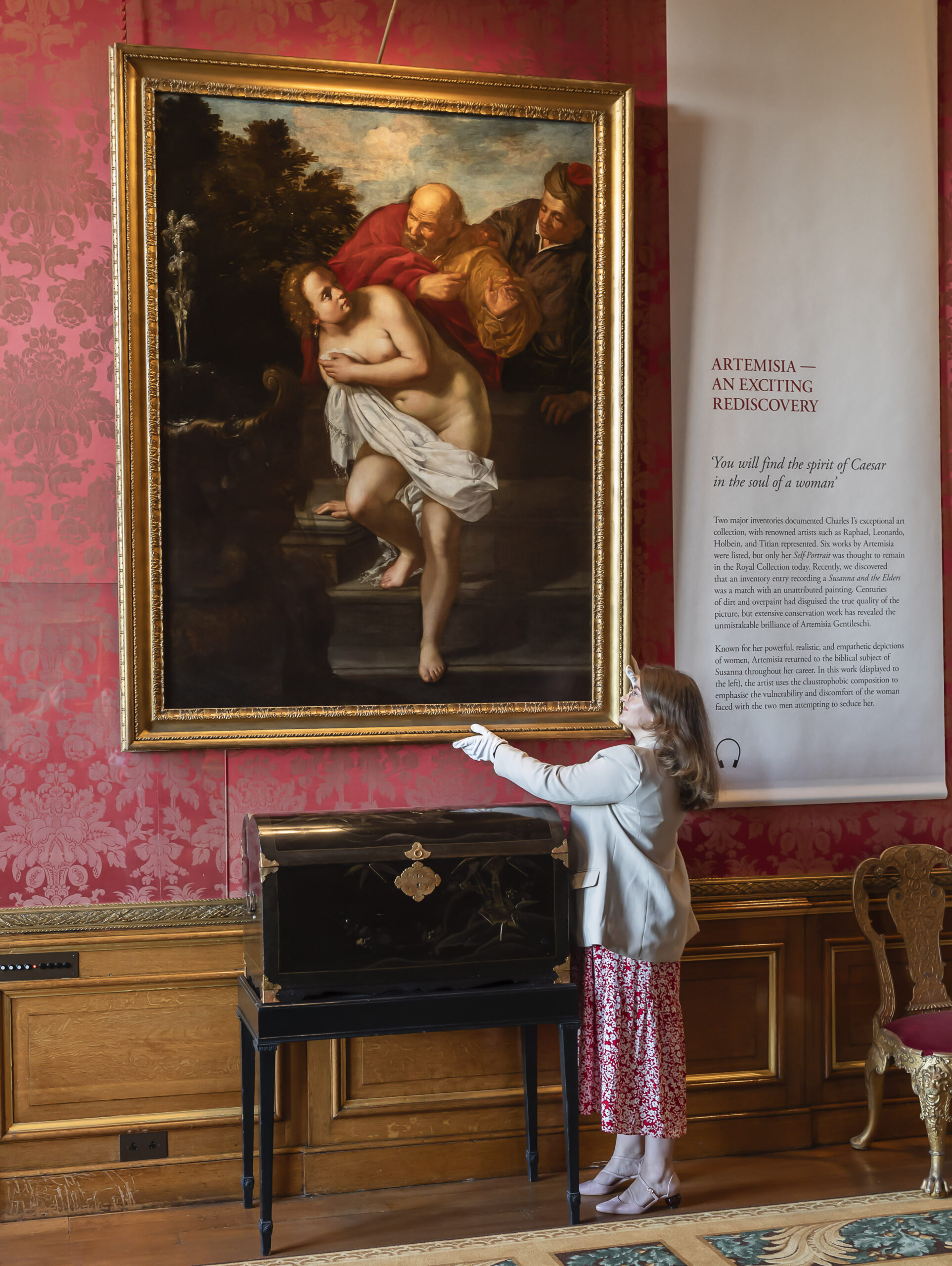
Susanna and the Elders has been ‘rediscovered’ in the Royal Collection
The rediscovered painting, named Susanna and the Elders, was commissioned by Henrietta Maria in around 1638-9 while Artemisia was working at the English court alongside her father, another artist.
Dr Niko Munz, a former curator at the Royal Collection, was seeking to trace the paintings sold off by the Commonwealth all over Europe after the end of the Monarchy in 1649.
Research allowed curators to match the description of Susanna and the Elders to a painting that had been in storage at Hampton Court Palace for over 100 years, and in very poor condition. The piece was noted in a 19th century watercolour of The Queen’s Bedchamber at Kensington Palace.
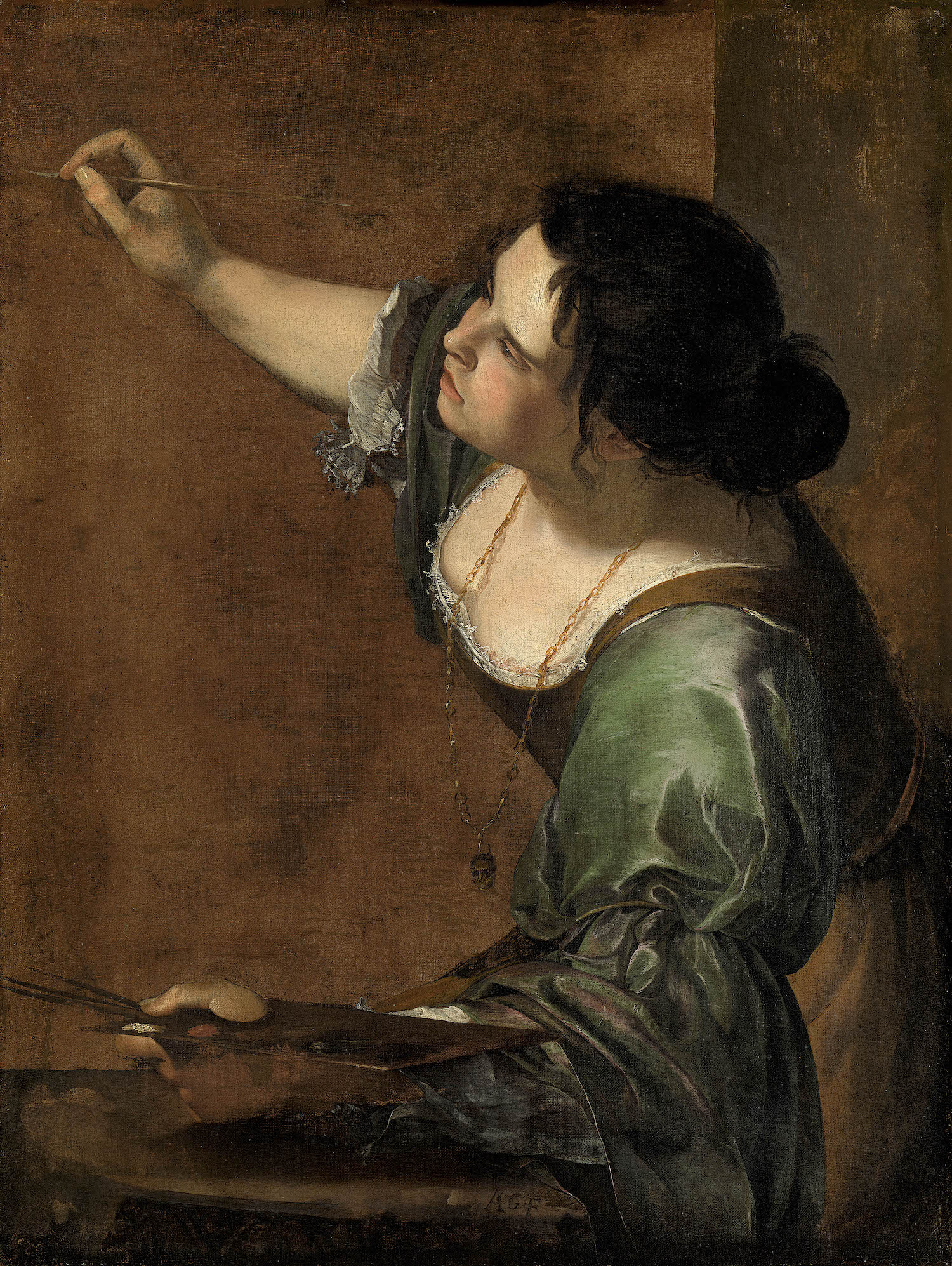
Artemisia Gentileschi’s self-portrait (Royal Collection Trust / © His Majesty King Charles III 2023)
Depicting the Biblical story of Susanna, who is surprised by two men while bathing in her garden, she refuses their advances, and is falsely accused of infidelity. This was an act punishable by death, but her innocence was eventually proven.
The Royal Collection says the painting ‘forms a significant addition to Artemisia’s extant body of work and sheds fresh light on her creative process and her time in London’.
A 1639 royal inventory shows that the painting originally hung above a fireplace in the Queen’s Withdrawing Chamber at Whitehall Palace – a relatively private room used by Henrietta Maria for receiving small numbers of officials, eating and relaxing.

A watercolour by Richard Cattermole shows the painting in The Queen’s Bedchamber at Kensington Palace, c.1818 (Royal Collection Trust / © His Majesty King Charles III 2023)
But centuries of dirt, as well as varnishing and overpainting, meant it was not recognised as the original piece until now.
The painting was one of seven in Charles I’s collection, recorded in inventories before his execution, and in 1639 was hung in the Queen’s Withdrawing Chamber at Whitehall Palace – a relatively private room used by Henrietta Maria for receiving small numbers of officials, eating and relaxing. But only Gentileschi’s Self-Portrait as the Allegory of Painting (‘La Pittura’) was thought to survive today as part of the collection.
A previously-hidden ‘CR’ brand has also been found on the back of the canvas, confirming that the painting was once in Charles I’s collection, meaning Carolus Rex.
It has undergone extensive conservation, and is now on display at Windsor Castle in the Queen’s Drawing Room alongside the Self Portrait – considered one of her greatest works – and Joseph and Potiphar’s Wife by her father Orazio Gentileschi, painted during his time in London.

Susanna and the Elders, painted by Artemesia Gentileschi, before and after conservation (Royal Collection Trust / © His Majesty King Charles III 2023)
Artemisia Gentileschi earned a reputation for her work across Europe in the 17th century, a time when few women artists were formally recognised.
She trained with her father in Rome and later worked across the other artistic centres of Italy for aristocratic and royal patrons. Her work fell out of favour in the 18th and 19th centuries, but in the last 50 years she has become known for her powerful and empathetic depictions of women from history.
The Royal Collection explains that male artists of the period often ‘presented an idealised or sexualised view’ of the story of Susannah, whereas Artemisia’s painting gives ‘great emphasis to Susanna’s vulnerability and discomfort’.
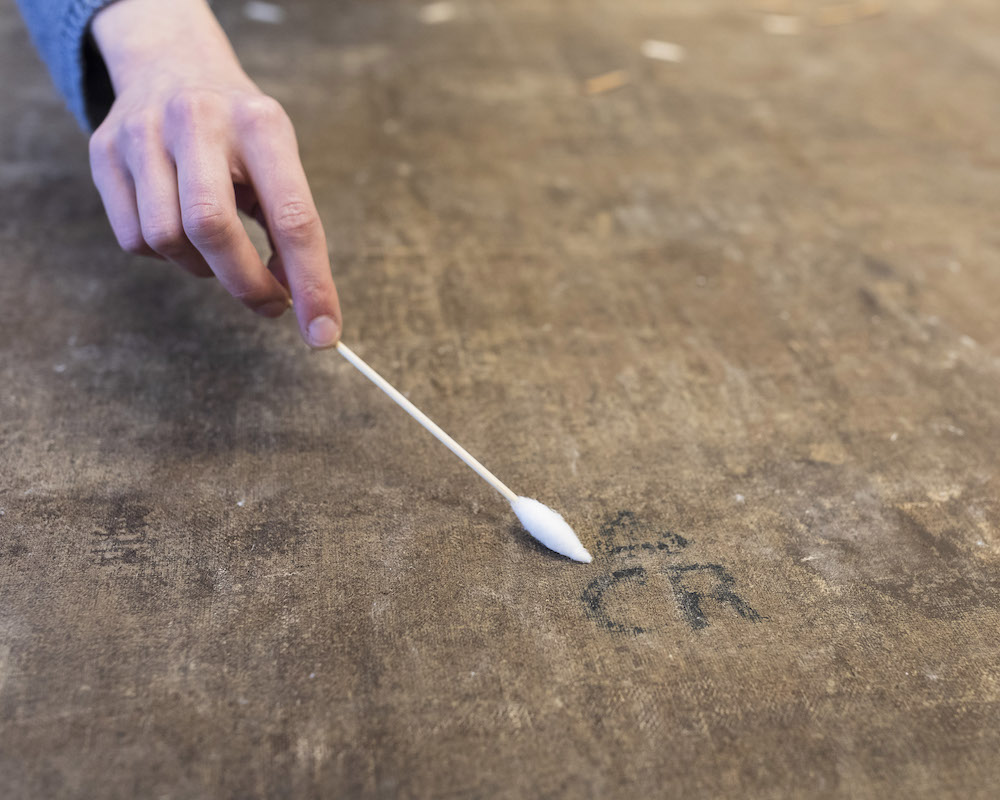
The CR brand found on the canvas after conservation work indicates it was part of Charles I’s collection (Royal Collection Trust / © His Majesty King Charles III 2023)
The story is one that she returned to many times over her 40-year career, painting at least six compositions and they note that it may have held ‘particular resonance’ given Gentileschi’s own experience of sexual assault; she was raped at 17 by an artist in her father’s workshop and subjected to gruelling questioning and the use of thumbscrews at his trial. It should also be noted that the trial was not for the rape itself, but because her father had pressed charges because the perpetrator did not marry Artemisia afterwards, following traditional societal expectations.
Anna Reynolds, Deputy Surveyor of The King’s Pictures, said: ‘We are so excited to announce the rediscovery of this important work by Artemisia Gentileschi. Artemisia was a strong, dynamic and exceptionally talented artist whose female subjects – including Susanna – look at you from their canvases with the same determination to make their voices heard that Artemisia showed in the male-dominated art world of the 17th century.’
Dr Niko Munz said, ‘One of the most exciting parts of this painting’s story is that it appears to have been commissioned by Queen Henrietta Maria while her apartments were being redecorated for a royal birth. Susanna first hung above a new fireplace – probably installed at the same time as the painting – emblazoned with Henrietta Maria’s personal cipher ‘HMR’ (‘Henrietta Maria Regina’). It was very much the Queen’s painting.’
Further analysis of the painting, including xrays and reflectography, showed that there was originally a fountain the background, eventually painted over with trees, and with reused elements from other paintings, such as the Elders’ heads and Susanna’s face.
Adelaide Izat, Paintings Conservator, said: ‘When it came into the studio, Susanna was the most heavily overpainted canvas I had ever seen, its surface almost completely obscured. It has been incredible to be involved in returning the painting to its rightful place in the Royal Collection, allowing viewers to appreciate Artemisia’s artistry again for the first time in centuries.’
The painting can be viewed as part of entry to Windsor Castle, alongside other Stuart masterpieces in the Royal Collection. Book tickets here.

